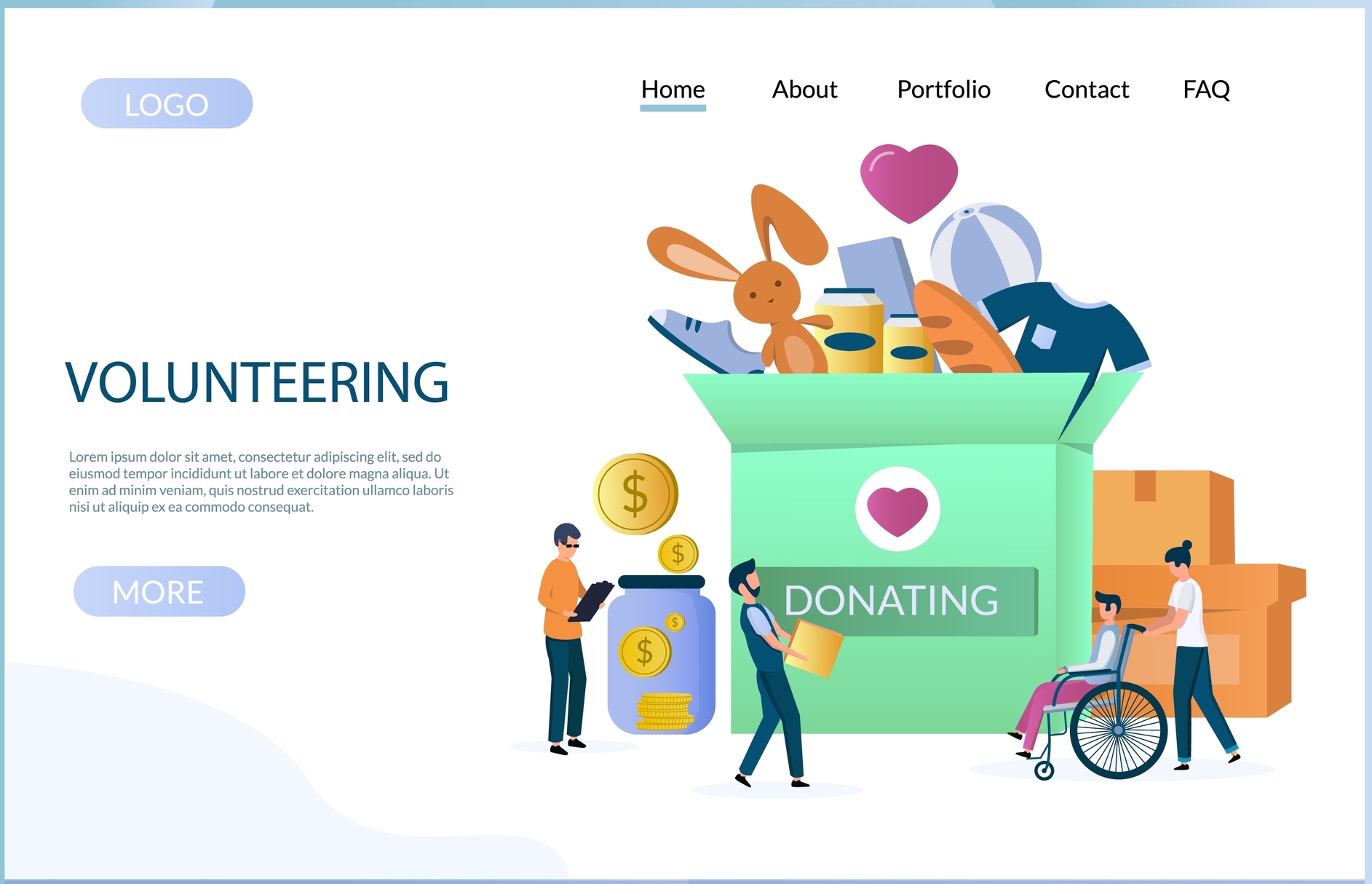As a nonprofit, your website is a core element of your online presence. This platform allows you to connect with your audience, raise awareness for the causes you support and get donations. You can get more from this existing online presence by launching a members-only area.
Nonprofit websites can benefit from a members-only area in the following ways.
1. Broaden Your Reach and Improve Visibility
Creating a membership website or members-only area will meet the expectations of an audience segment that wants to support a cause and engage with a nonprofit in the long-term. These donors might want to make recurring donations and receive regular updates about the projects they support.
Members-only content can also help you reach out to a target audience that expects more when supporting a nonprofit. They might expect content that informs, inspires or helps them meet their personal or professional goals.
You can improve your outreach and visibility by keeping members engaged through exclusive content or events. A membership website will make donors feel like they are truly a part of your efforts. They will be more likely to talk about your nonprofit, share your content on social media and play an active role in supporting your cause.
Membership creates a sense of belonging and helps donors identify with your mission. You will get more word-of-mouth marketing if people feel this strong connection with your organization.
2. Showcase Your Nonprofit’s Mission and Goals
Nonprofit websites are often concise. They typically state what the organization’s mission is and remain succinct to grab the attention of potential donors. A membership website gives you the possibility to develop more in-depth content. You can create content for an audience segment that is already familiar with your mission and that expects more detailed information.
You can document current projects, highlight volunteer or project success stories, look back on the outcome of your past missions and discuss projects that you will develop in the future. Publishing this type of content on your membership website will help you be more accountable to your audience. It will keep members interested in your mission and show them the concrete steps you take to make a difference.
Showcasing your nonprofit’s mission and goals will help members get a better understanding of how their support is making a difference. It’s a way of encouraging involvement since this type of content allows them to research your different initiatives and choose the ones they want to support or become involved with.
Sharing things like numbers or case studies can also turn members into advocates for your cause since they will have concrete information they can share when talking about your nonprofit.
3. Built Trust with Website Visitors
Trust is an important factor that influences the decision to support a nonprofit. Donors want to know that their contribution will go toward a cause they care about. They also want to make sure the nonprofit they choose to support has a measurable impact and delivers enough value for the people or communities it helps.
A membership website can increase trust because it shows that you have a group of donors who are willing to engage with your organization and make recurring donations.
You can have members-only content that gives you the possibility to talk about your projects in detail. You can build trust through case studies, numbers, testimonials and other pieces of content that show a tangible impact on your different projects. Being consistent with sharing this type of content will make donors feel more confident when they make a donation. You can also create content that documents the progress of each initiative and project. Showing the ongoing impact of your efforts can help get more recurring donations.
Features like feedback and contact forms can also help with establishing trust. Making these features available shows that you are listening.

4. A Better User Experience
When existing members visit your website, they are looking for specific content. A membership website ensures that your current members are seeing the most relevant details and information from your nonprofit. Here is how a members-only area results in a better experience for nonprofit websites:
- Navigation. Placing a members-only section behind a login page can reduce clutter on your website. You can use your homepage and other public pages to share content that is relevant to a broad audience and use the members-only section to share content that is relevant to recurring donors.
- Tools and user preferences. Having users log in gives you the possibility to offer a more personalized experience since they can save their preferences. You can offer tools that enhance the user experience, including a form to update contact information, settings to adjust email preferences or a page to manage their membership and recurring donations.
- Personalization. You can use your members-only area to deliver content that feels more relevant. Donors could choose which projects they want to track and receive updates. You can also deliver content that is more personalized based on a donor’s past activity or the events they attended.
5. Engage with Current and Potential Donors
The very act of logging into a website feels more engaging compared to browsing. You can also use your membership website to deliver content that feels more engaging, like video testimonials and blogs.
You can engage your audience through a more personalized experience. Users will be more likely to visit your site again, consume more content, and keep up with your mission if they feel that content is relevant to their interests and previous interactions.
You can create different audience segments to deliver content that is relevant to their level of engagement. You can, for instance, create a friend tier to let users who haven’t made a donation yet or joined access content created to inform about the cause you support.
Engagement is also about getting members to interact with your nonprofit. You can add a feedback or survey feature to your members-only area to find out more about the kind of content people would like to see, which goals matter to them, and how you can deliver a better experience.
6. Increase Online Donations
A membership website will enhance the value donors get from your nonprofit. You can let donors unlock more value in the form of exclusive content or use one of the following strategies to increase online donations:
- Creating content that makes you more accountable and builds trust with your audience can result in more donations.
- Establishing different membership tiers can give donors a reason to increase their donation to access more exclusive content and perks.
- Leveraging audience segmentation based on donation activity can help you collect more funds. You can deliver personalized content to connect with members shortly before their membership renewal is due.
- Letting users access some of your exclusive content before they make their first donation will help them get a better idea of the kind of value you deliver.
- You can provide even more value by using your membership website to organize and promote members-only virtual events. Use audience segmentation to promote in-person events to members in specific areas.
7. Create Members-Only Content
Implementing a members-only content creation campaign is easier than you think. Tools like the Squarespace membership plugin let you add HTML snippets to your pages to hide content and then make it visible once a member logs in. You can also create a members-only section behind a login portal.
Nonprofit websites typically focus on content that raises awareness for their cause and briefly explains how they make a difference. Because members are already familiar with what you do, you can go into more details, take a more concrete approach and explain how you make a difference.
Your members-only content can still introduce users to the issues you address since you will have new members who primarily want educational content. A series of automated emails for new donors or members can inform them about your mission and show the value you offer. You can create automated emails from blog posts that introduce new member only volunteer experiences. Some nonprofits such as the Mobile Loaves and Fishes tiny home community have such popular volunteer opportunities that potential volunteer groups have to request months volunteer slots in advance.
However, members-only content can go further by telling stories that inspire. You can share regular updates about your different projects, share opinion pieces with your unique position on the issues you address and explore different formats.
You can tell compelling stories with numbers to show how you helped a community or use testimonials to show how your nonprofit made a difference for a person or family.
Here are a few examples of the different formats you can use to develop engaging members-only content:
- Lists of volunteer opportunities that are only open to members
- Blog posts
- Video testimonials
- Short documentaries
- Podcast episodes
- Infographics
- Case studies
- eBooks
- Photo albums
Tips for Building an Effective Membership Website for Your Nonprofit
A membership website will deliver more value for donors, help you connect with your audience and can increase donations. Here are a few tips for building a great membership website.
Design with intent and audience in mind
A good rule of thumb for any web design project is to start with the intent and audience. Ask yourself what the purpose of your membership website is. Outline what you want to accomplish with this new project and how this site fits into your overall mission. Having clear goals for your membership website will help you measure results and identify the features you need to add to this new website.
It’s also important to consider your audience. Figure out who will use the membership website and why. Will users visit the members-only area to manage donations, consume content or accomplish another task? Understanding who your audience is and what these users want to accomplish will help you offer a better navigation experience and develop relevant content.
Create valuable and informative content
Content that delivers value is a staple of any good membership website. Members will keep coming back to your site and renew their membership if your content meets their expectations.
A good way to develop valuable and informative content is to have a content creation calendar with different blog topics, but there are other formats to explore. Videos can feel more engaging than text, and it’s a format that allows you to tell inspiring stories.
Just like with your design, consider intent and audience when developing content. The purpose of a piece of content can be to inform or inspire. You should define your audience based on how familiar these users are with your mission and different projects.
Choose a responsive design
A responsive design uses dynamic elements. The size and position of these elements will change based on the device or screen size. A responsive design means that things like image width and resolution or text size will change to deliver the best experience possible on different devices.
It’s important to account for the wide range of browsers, devices and screen sizes that exist. Most people browse the web on their smartphones, so delivering a good experience for this platform is critical.
Conclusion
Creating a membership website is easy, and it’s a great way to unlock a new way of keeping your audience engaged. You can deliver more value with exclusive content, keep donors updated about your different projects and get more donations.
There are benefits for your nonprofit as well since you will get to connect with your online audience, get some feedback, hear about their ideas and develop more in-depth members-only content that will help with accountability.




Comments are closed.